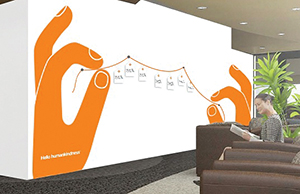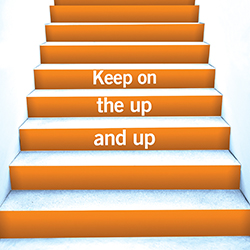From its parking lots to its patients' rooms, Dignity Health is spending $220 million on design elements, furniture and electronic tools to improve the experience the public and Dignity's employees have in its hospitals.

As a foundation for the redesign, representatives of the San Francisco-based health care system sought input about ways to improve the patient experience in its hospitals from patients and their families, including those who are on the volunteer advisory committees at its acute-care facilities. Land said drawings of potential design changes were shared with clinical and administrative teams at each facility for their feedback and to prioritize what changes were most important to them.

Once it identified the priorities and preferences of patients and employees, Dignity Health worked for about a year on how to address them through facility and furniture design. The design changes it developed relate to 16 "touch points" or intersections in and around Dignity Health's acute-care environments where staff, patients and their families interact, said Land.
The redesign rollout began this fall and will be completed at all of Dignity Health's 39 acute-care facilities in California, Arizona and Nevada by the end of 2016.
The design changes start at the campus edge, with clear directional signs pointing to the locations of campus services. Signs on surface parking lots and garages, for instance, will clearly indicate pick-up stops for free shuttles to hospital entrances.
Land explained visitors will be able to link to Wi-Fi more easily than they previously could at Dignity Health facilities and to download a new GPS-enabled "way finding app" on their electronic devices. In time, family members may receive a text update, such as a message that a loved one is out of surgery, so they'll know when they can speak to the surgeon or see the patient.
To underscore its healing mission, new "No smoking" signs in Dignity Health facilities will include the tagline "Every breath matters here."
A "hello" greeting will be incorporated into the design of hospital main lobbies through signs and three-dimensional letter sets located in front of some reception desks. Dignity Health thinks the word makes people feel welcome. It also ties directly to the system's "Hello humankindness" campaign begun in 2013 with advertising, social media outreach and operational changes at its facilities. The brand perception initiative aims to let people know they'll be well-cared for in a Dignity Health facility and to more broadly encourage people to be kind toward others.

Dignity Health staff worked with La-Z-Boy to design a comfortable overnight sleeping chair for patient visitors that is equipped with a flip-up desk, a USB port for portable technology and a built-in reading light. The chairs fold flat for sleeping but still allow staff to maneuver around the room to provide patient care. Dignity Health has ordered about 1,000 of the chairs.
Dignity Health's hospital cafeterias will include "wellness walls," with a digital monitor and panels providing information about healthy eating choices. The cafeterias will have new furniture and some additional outdoor seating.
As part of its makeover, Dignity Health is renovating staff and physician lounges, upgrading furnishings, shower and locker facilities and installing phone-charging stations. Employees using staff entrances will see messages of appreciation for their hard work. One reads: "We thank you from our whole hearts (not just from the bottom)."
Land said taken in total, the changes are meant to improve the experience of everyone who comes to a Dignity Health acute-care facility. "I believe this moves the needle related to patient experience and family experience in a way I haven't seen before," he said.
